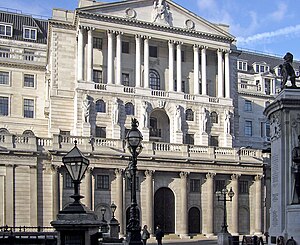| English: Vauxhall Bridge, London. View of the downstream side (north east) of the bridge from Millbank on the north bank of the Thames river. (Photo credit: Wikipedia) |
Effra
The River Effra is arguably the best known of South London’s lost rivers due to a campaign by a group called the Effra Redevelopment Agency to unearth its course in the early 1990s. The source of its name is still disputed cannot be traced back in the history books beyond the mid 19th century when much ‘burying’ of the river took place. The course of the river runs underground through culverts as well as sewers which were constructed in the 19th century to utilise the natural contours and flows of the river as suburbs were developed upon it.
The primary route would have taken the river’s waters through the borough of Lambeth, from Upper Norwood (which would have been woods), through Crystal Palace, Dulwich, Herne Hill, Brixton (which was a small village before its urbanisation) and Kennington (where criminals were hanged on the adjacent common) before emptying into the Thames at Vauxhall (near Vauxhall Bridge). Its course can still be traced through sewers along much of this route but these sewers now take some of the flow across to South East London and into treatment works. One more obvious hint to the former course of the river is the naming of Effra Road in Brixton, under which the river still flows within the sewer. This stretch also provides one of the two access points to the former river, the other being under the crypts of St Luke’s Church in West Norwood.
In truth, the river would have been more like a collection of streams congregating (particularly around what’s now Herne Hill) before flowing into the River Thames and the primary course of the underground river is still fed by a number of tributaries coming from across south Lambeth, from the areas in and around the Dulwiches, the Norwoods and Crystal Palace.
Wandle
The River Wandle is the largest river flowing northwards through London into the Thames. Capturing water running off of the North Downs, the river flows for 9 miles from Wandle Park in Croydon, through districts such as Sutton, Merton and Wimbledon, arriving at the Thames at Wandsworth from which it is thought to take its name. Akin to many of the lost rivers in the capital, it has been heavily managed due the urbanisation of the areas through which it flows, ever since the first settlements of the Romans. In particular, the textiles and tobacco industries have flourished on its banks in later centuries by harnessing the energy of the river. As a consequence, certain stretches of the river have been re-routed or buried but much of the course still runs above the surface through south London.
Like most of London’s ancient rivers, the flows of the River Wandle would have weaved in and out of many streams feeding and being fed by the main artery as it found its way across what would have been wetlands. Until recently this characteristic was still apparent on the river’s course through Croydon as it split into a number of streams through the town, but the spreading of disease and a need for better sanitation demanded that these waterways be filled in.
If you are interested in moving to the areas of South London mentioned in this article then you can visit Flats to Rent in Wimbledon, or, for the other side of the Thames, Estate Agents Mayfair.







